Don't wanna be here? Send us removal request.
Text
Somali Bantu History

Introduction: The Somali Community is made up of various ethnic groups. The two majorities of Somalis are Cushitic and Bantu. These are the two largest ethnic groups. Other groups living in Somalia are Arabs and Italians, who are minorities. The Cushitic Somalis are split into several clans. For instance, we have the Darod and Hawiye clans, which form the Sab-Clans. Most Cushitic people live in the northern region, and some are on the southern side of Somalia. The main occupation of Cushitic Somalis is pastoralism — they spend most of their lives moving with animals. They speak the Maha, which is the official language. On the other hand, the Bantu Somalis occupy the Shebelle and Jubba river valleys, and most of them practice farming. They are culturally and ethnically different from the Cushitic Somalis. They also are split into several clans, and most of them reside in the southern region, an area that extends to central Somalia. Most of them are Zigua and Mai Mai speakers. When the civil war of 1990s broke out in Somalia, the Bantu Somalis have faced all forms of dehumanization. They feared the Cushitic Somalis, and that’s why they didn’t stand up to them. During the war, the Cushitic had taken everything from them. Many of the Bantus migrated to Kenya in the refugee camps. They applied for asylum in the United States. They were officially classified as “persecuted,” Then, the United States opened its doors in 2000 to settle many of the Bantus. Therefore, this research article seeks to outline the relationship between the Cushitic’s and Bantu Somalis in terms of (1) their differences, (2) their history, (3) The Ethio-Somali war, (4)how the civil war of Somalia in the 1990s began, (5) how the civil war affected Somali Bantus’ living state, and (6) a reflection on the Somali Bantu and Cushitic situation.
Somali Bantu and Somali Cushitic Differences
There is a significant difference in the two communities in Somali. There are significant ways in which the two communities differ, for instance, the aspect of origin, appearance, and economic activities. Somalia, one of the countries in East Africa, contains both the Bantus and Cushitic people. Although in one country, the two groups are different, significant ethnicities that use Somalia’s natural resources. Also, the population of Bantu and Cushitic Somalis has increased rapidly over the years. Still, cultural assimilation between the two groups is prevalent and prompts debates on the differences between them. However, irrespective of the assimilation in culture in the present day, they portray notable historical differences. Further, the two groups differ in their body size, appearance, economic activities, distribution, and social nature. In this section, each of these differences is discussed.
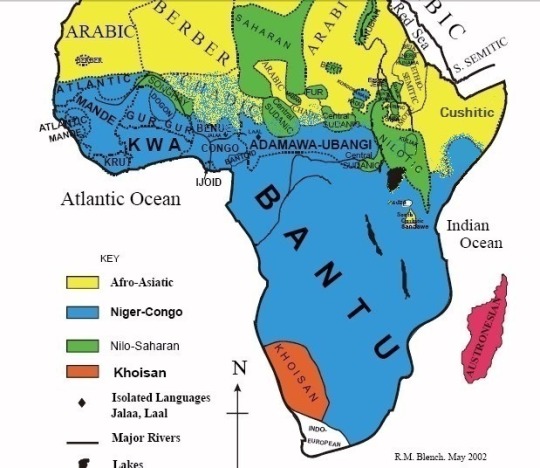
First, the Bantu and Cushitic groups differ in terms of their origin and distribution in Africa. The Bantus are composed of subgroups that originated in the Niger-Congo region and are primarily located in the tropical savanna climate areas. The Bantus mostly inhabit Western, Southern, and Central Africa, as well as some portions of Eastern Africa. On the other hand, the Cushitic people are composed of many subgroups, but they all originated in the Afro-Asiatic region. They are primarily located in warm desert climate areas and inhabit most parts of Eastern Africa. This reveals apparent differences between the two groups regarding their origin and distribution in Africa.

Second, Somali Bantus and Somali Cushitic can be differentiated based on their bodies’ physical structure and appearance. In general, Somali Bantus appear to have sturdier, more muscular physiques than the Somali Cushitic people. Somali Bantu men have healthy muscular bodies, while the Somali Cushitic people have weak, non-muscular bodies. Somali Bantus also exhibit a shorter body structure, while Somali Cushitic people have thin bodies with a taller body structure. Moreover, Somali Bantus have Afro-textured hair that naturally grows to medium length. In contrast, the Somali Cushitic people have thin, textured hair that typically grows to more extended lengths like Asian hair. Somali Bantus also differ from Cushitic Bantus in the physical makeup of their noses. Somali Bantus have a thicker, shorter nose structure, while Cushitic people have a thinner, sharper nose appearance. Therefore, foreigners to Somalia can use identifiable differences in physical body structure to differentiate between the Bantus and Cushitic Somalis.
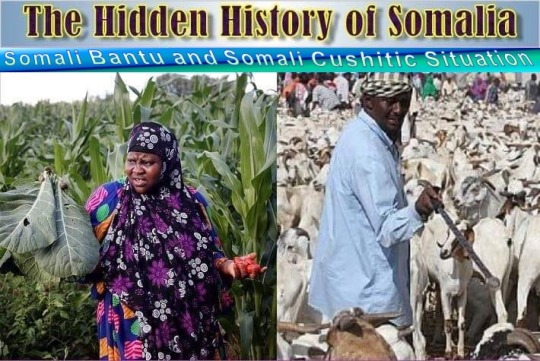
Moreover, Somali Bantus and Cushitic people differ in the types of economic activities practiced as well as their settlement regions. Though both groups reside in the same country, they utilize the country’s economic and natural resources differently. Somali Bantus are highly concentrated in the country’s southern region, particularly around the Juba and Shabelle rivers, characterized by cool and wet climatic conditions. Somali Bantus’ main economic activity is crop farming associated with minimal livestock keeping. Thus, the Somali Bantus are exclusively vegetarians. They rely heavily on the southern region’s conventional rainfall and water from the Juba and Shabelle rivers for farming activities.
On the other hand, the Somali Cushitic people reside in the Northern Somali region. The northern part is a semi-desert with hot and dry climatic conditions. The Cushitic people keep livestock on a large scale since it is their main economic activity. They are known for being nomadic since they move from one place to the next in search of water and pasture. The Cushitic people rely on products from livestock such as goats, sheep, cows, and camels. Thus, most of their food comprises animal products, particularly livestock meat. The difference in food types consumed by the Bantu and Cushitic peoples, therefore, explains the underlying differences between the physiques of the members of these two ethnic groups.
It should also be noted that the Somali Bantu and Cushitic people differ in their social nature. The Cushitic people have an inherently radical nature, while the Bantus are docile and peaceful individuals. Looking at the terms radical and docile, we see apparent differences in the social composition of the two groups. Radical pertains to people who over-express their feelings and appear violent at times, which is against human norms. Docile people are moral, rational, and take time to express their feelings. In terms of brain functioning, the Cushitic people are quick to act and are fast in decision-making with minimal thinking about the consequences of their decisions. Due to the irrational manner in which the Cushitic people deal with issues, they are more likely to engage in violence. In Somalia, ethnic attacks have become a norm among the Cushitic communities. Clashes are seen as part of life, though they cause suffering and pain. Cushitic people attack and harass other ethnic groups without viable reasons, especially when they see their weakness. The only reason they do that is to satisfy their heartless nature.
On the contrary, Somali Bantus take time to make their decisions. They are more analytical than their Cushitic counterparts. Due to the logical way of thinking, they hardly engage in violent behaviors. While they may not be as fast as the Cushitic group in their thinking patterns, they quickly develop trust in other individuals. At times, the Cushitic people take advantage of their logical thinking. Moreover, the Bantus are rigid in their way of life. Hardly do they accept change in their social behaviors. In general, the Bantus are peaceful in their way of life; thus, they may appear naïve to the outgoing Cushitic group.
Thus, Somali Bantus and Cushitic peoples differ in physical body structure, economic activities, and social nature. Cushitic people have a weaker body physique than the Bantus due to the different work performed and the different types of food consumed by the two groups. Somali Bantus practice crop farming as their main economic activity, while the Cushitic people are nomadic pastoralists. Bantus are peaceful and analytical in decision-making, while the Cushitic people are quick to make decisions and willful.
Somali Bantu and Somali Cushite History

There is an interesting history of the Bantus and the Cushitic people in Somalia. For centuries, the Somali Bantu and the Somali Cushitic lived in Somaliland harmoniously. At the time, they lived in different regions. The Bantu occupied the southern part of Somalia, while their counterparts, the Cushitic group, occupied central and northern Somalia. The land was peaceful, as no group interfered with the affairs of the other. Still, each group defended their territory and could even help one another in times of need. In their subgroups, they governed themselves for many generations. However, a time came when a group of Cushitic people visited the Bantu southern region searching for food. They looked weak, thin, starved, and tired, as they had walked for a long distance without food. Due to their state at the time, the Bantus did not realize that the Cushitic group could be dangerous. Thus, after the Cushitic members had expressed their needs, the Bantu, out of their generosity, decided to offer help. They gave them food and shelter as they sympathized with the sickly state of their visitors. The Cushitic gladly received a warm welcome. Nonetheless, the Bantu only adhered to their moral practice of welcoming those who needed their help and forgot to be cautious when dealing with strangers whom they did not fully understand. Henceforth, the Bantu and the Cushites started living together. The Bantu shared their resources with the Cushites and made sure that they were well fed. As a result, the Cushites became established in the Bantu region. The Bantu invited a bitter enemy into their region out of their generosity.
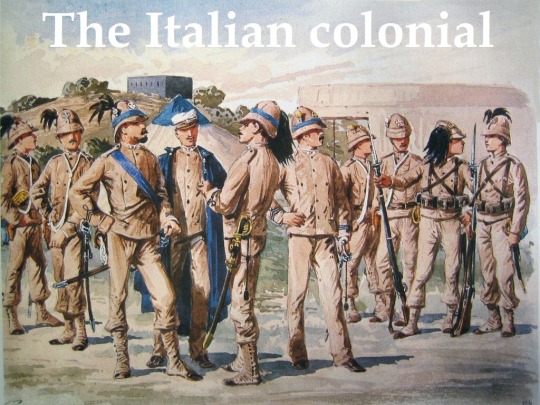
Many years later, Italy colonized part of Somaliland and took control of the two regions occupied by the Bantu and the Cushitic groups, which was the genesis of the Bantus’ problems. The colony built many schools in the Bantu and Cushite area, and the Cushites who were living in the Bantus’ areas used to warn them not to go to school while the Cushite children were in school. When the Bantus asked why, one of the justifications the Cushites gave was that the schools’ teachings were based on the Christian faith and would lead their children away from the Islamic faith. The Cushitic people acted as if they cared for the Bantus while lying to and deceiving them. Their situation was just like the prophet Adam and the Devil’s story. The Devil told Adam to eat from the tree that would make him immortal, acting as if he cared about him. This same misconception misled many Bantus. As a result, many of the Bantus never acquired formal learning. They remained illiterate while the Cushites educated their children. As the colonizer left the colony, it was granted independence. However, the chosen leader came from the Cushitic group.
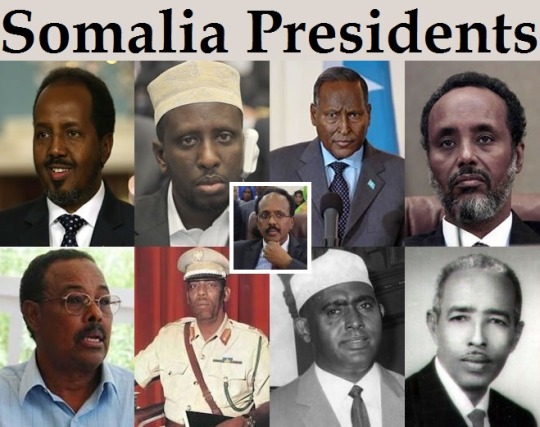
The government was transferred to the Cushite people after the colonizers left the colony. The Cushite-led government wanted nothing to do with the Bantus since the government is in their hands. Thus, constant conflicts emerged between the two groups, as the Cushites often acted against the Bantus. The Bantus let the Cushitic group lead the country in their desire for peace to prevail in the region, and they started sending their children to government schools. That, however, did not improve the situation. The government continuously discriminated against and deceived the Bantus. For instance, when the Bantu’s children graduated from high school, the government gave their diplomas to Cushites who had not graduated, and then transferred them to other countries. There are so many Bantu children who finished high school but have no diplomas. The government did so to kill the Bantu’s hope in the country. In this way, the Bantu people will never have opportunities to join the government. Therefore, the Somali-led government that was given the Italians’ reins started discriminating against and deceiving the Somali Bantu.
In conclusion, the historical record shows that before the Italians invaded Somalia during the colonial era, the area of Somalia was separated into two different geographical regions, each occupied by Bantus and Cushitic communities. During this period, the Somali Bantus enjoyed control over the southern part of Somalia, and the region flourished in peace. When the Cushitic people from Ethiopia and Northern Somalia arrived in the Bantu southern region, the Somali Bantu welcomed them with open arms and without any caution. Following the emergence of the Italian colonial control of Somalia, they accepted that the two areas be combined, and the Bantus let the Cushitic people control regions. That produced catastrophic consequences, as the Cushitic-led government instituted oppressive, discrimination, and corrupt governance. Therefore, the harsh and unfriendly treatment of the Somali Bantus stems from a mistake made by their ancestors before the colonial era. That teaches us to be cautious even as we welcome strangers, as they may turn out to be traitors.
The War between Somalia and Ethiopia in 1977
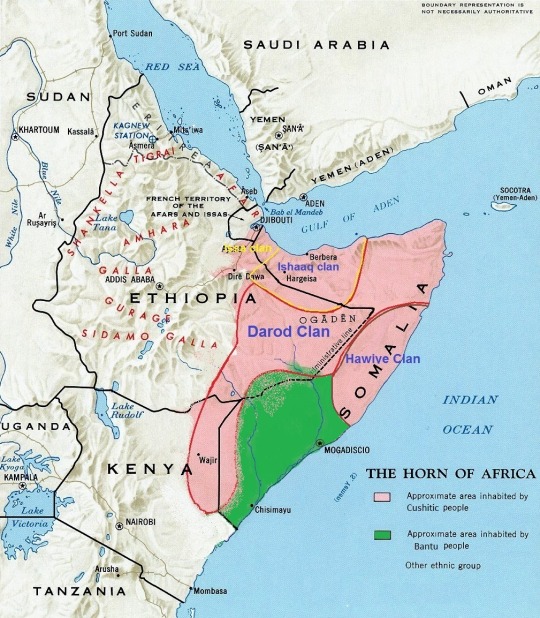
In 1977–1978, there was a war between Somalia and Ethiopia. This war was called the Ogaden war or the Ethio-Somali war. This war was a result of Ethiopia and Somalia fighting for a region that was between them. The area was known as the Ogaden Region. Below is an explanation of how the whole war was and the result of the war. Upon Siad Barre becoming the president of Somalia, the war started between Somalia and Ethiopia. Siad Barre used the Somali Bantu children in the war to fight the Ethiopians, especially on the front lines, while his clan was in the back. The cause of this war was to protect the sub-clans where Siad Barre originated. The Somali Bantus’ population decreased at a very high rate after Siad Barre became president, even though they still had children just like the Cushites. This was different from the Somali Cushite people, whose population increased since they did not participate in the front line in the war.
To understand more about the Ogaden war, we need to understand what led to the Ogaden war. The Cushitic Somalis are split into several clans, the same as the Bantus. For instance, we have the Darod clan, which also form sub-clans. The Darod clan was one of the largest sub-clan among the Cushitic ethnic group, and still, it was divided into three groups; the Darod of Somalia, Ethiopia, and Kenya. In 1977, Ethiopia and Somalia were absorbed in a colony dispute over the Ogaden region. The region was located between Ethiopia and Somalia, and so the two nations claimed the area to be theirs. The difficulty in the war was that big powers supported both of the states, which could bring the Cold War to Africa. This notion of the Cold War in Africa was very sound because the Soviet Union financed Ethiopia, while the United States financed Somalia. To conclude, this war was very tricky, and if care was not taken, it could extend to the other parts of Africa. If this war continued, then the notion of the Ogaden war bringing the Cold War in Africa would be proved right.
It is good to understand whether, before the war started, there disputes were between Ethiopia and Somalia in the past. According to research, it is clear that before the Ethio-Somali war started, there were disputes about the Ogaden region. Due to the Second World War, when Ethiopia had lined up with the Allies in opposition to the Axis powers, Great Britain renounced its claims on the Ogaden region as a fragment of the British Somali land. Besides, once the British Somali area became a fragment of Somalia’s new independent state in 1960, the government had no option than to control the region. Afterward, there was intensified monitoring of the area when a military coup in Somalia led to the killing of the Somali president Abdirashid Ali Shermarke. Then, in 1969, the military under Siad Barre seized control of the state of Somalia. One could tell that things were not getting any better.

To better understand the situation, it is also good to know what was happening in Ethiopia when things were not right in Somalia. In this period, the longtime emperor of Ethiopia, Haile Selassie, was displaced in September 1974 by the defense force known as the Derg. This led to the disorganization of the Ethiopian nation, leading to the emergence of many separatist movements that were opposed to the Derg due to uncertainties in Ethiopian politics. Surprisingly, one of those groups, called Western Somali, was staying in the Ogaden region of Ethiopia. The same group asked for the takeover of the territory they controlled in Somalia. To conclude, it was the beginning of another dispute between the Somali natives in the Ogaden region with the Ethiopian natives.
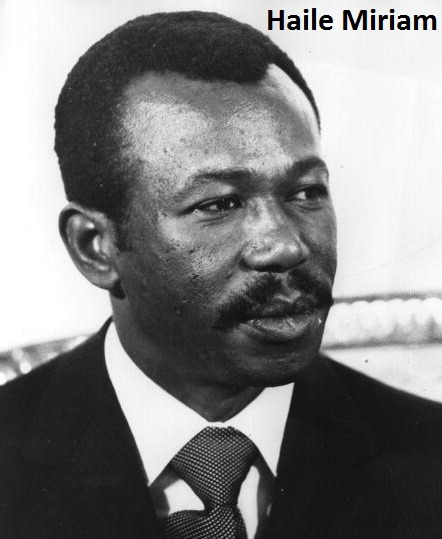
Before entering the real war, we have to understand what was happening to the Derg. So, in 1977, Haile Miriam had become the Derg leader, who was in the custody of the whole of Ethiopia. Due to these privileges, the Derg suppressed all the Ethiopians and, to be specific, the Western Somalia Liberation Federation (WSLF) and its supporters. Thus, there was more emphasis on the notion that there was a Cold War in Africa. By this particular time, the Derg had made Ethiopia a communist state and allied it with the Soviet Union. Allying it with the Soviet Union meant that now, the Ethiopians had funds to deal with Somalia since the Soviet Union would fund them.
Since the Somali government had obtained large quantities with Soviet help, they provided the Western Somali Liberation Federation with weapons. So, in July 1977, Somalia’s government army took thirty-five thousand armed men commanded by Mohamed Siad Barre. These Somali militaries were also supported by fifteen thousand military men from the Western Somali Liberation Federation. Together they invaded the Ogaden region, but unfortunately, the Army of Somali was outnumbered by the Ethiopian army. To their advantage, they had superior weapons because of earlier support from Soviet military donations. This was a clear alarm of a cruel war.
Moreover, the Soviets were also providing their newfound Ethiopia with funds and even weapons. After they were unsuccessful in getting a suspension in fighting, they gave all their aid to the Ethiopians by bringing fifteen thousand men from the Army of Cuba. Similarly, there were volunteers from other communist nations, Yemen, and South Korea. On the other hand, the people of Somalia had gotten aid from the United States. Given that now the two states were aided by supreme powers, the war escalated.
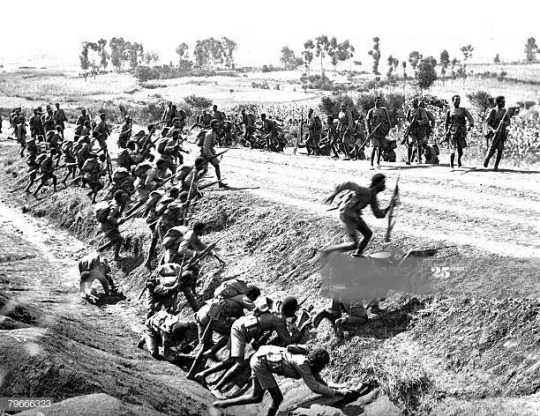
Lastly, there came the war where the fittest would survive since there was aid from supreme powers on both sides. When the war started in 1977, the Ethiopians had control of about ten percent of the Ogaden region. Since the Ethiopians received Soviet aid more often, they were able to overpower the Somali Army and their helpers, the Western Somali Liberation Front allies. In October, the Somali Army tried their best to be hostile to acquire the Harar city of Ethiopia. Unfortunately, they were faced by forty thousand militaries from Ethiopia and eleven thousand armed men from the Cuban Army who aided them. Soviet weapons and air forces also supported these Cuban troops. As stated above, the Ethiopians outnumbered the Somalians, and so they were able to push the Somalians out of the Ogaden garden without force. By March 1978, the Ethiopians had taken almost the whole Ogaden region. Now, the Somalians had been defeated, leading them to surrender their fight for the area. This is how the Ethiopians ended up having the Ogaden region in their name.
The Ethio-Somali war was the start of the Somali Bantu genocide. This is because Siad Barre was forcing Somali Bantu boys aged fifteen and up to join the war for free so that he could save his clan in Ethiopia. Concerning this, the Somali government had not shown the Somali Bantus how to fight. The only thing they taught them was shooting, and then they sent the poor Bantus to war. In the war, Siad Barre put the Somali Bantus on the front line, and then his fellow Cushites were at the back. This is a clear illustration that the probability of the Somali Bantus dying was very high. When the Bantus saw how their community was dying, they started running away, but in return, the Cushites were shooting them and telling them not to run away but fight for their country. There were very many Somali Bantus that died in this war. The Ethiopian army killed most of these Somali Bantus, and their fellow Somali people still killed some of them. This shows how Somali Cushite people were selfish and did not even care about their fellow Somali Bantus.
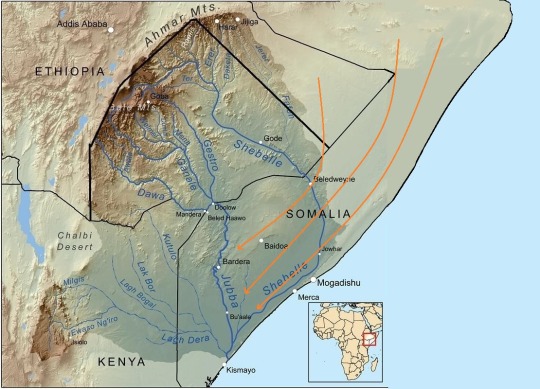
Even with these efforts, the president of Somalia did not succeed in taking the Ogaden region. Ever since former Somalian president Siad Barre lost the war with Ethiopia, one of his aims had been to seize the Bantu land for his people. Before Siad Barre, all other former presidents of Somalia were against the Somali Bantus, but they had never thought of erasing them from Somalia. Siad Barre was the first president who thought of seizing their land for his clan, and all other presidents after him have followed in his footsteps. Siad Barre divided the Somali Bantus and created disunity and hatred among them. After dividing the Bantus, Siad Barre started to resettle his sub-clans in Southern Somalia, giving them full control over Bantu land. The Bantus were not in control of their own villages, towns, and cities, let alone the capital. The Bantus controlled nothing in their own region; everything was given over to the management of the Cushitic people, especially those from the presidential sub-clan. The southern region belonged to the Bantus, but Siad Barre wanted to acquire it for his people because the land was very fertile. His general, Farrah Hassan Aidid, who was of the same Cushitic ethnicity but of the Hawiye sub-clan, began to notice the president’s plans and wanted a share for his own sub-clan, but Siad Barre refused to share the land. When the general realized that the president didn’t want to share with him in the deal, he started thinking about how he could take Siad Barre’s position. This was how the division of Somalia began until they eventually destroyed the entire country.
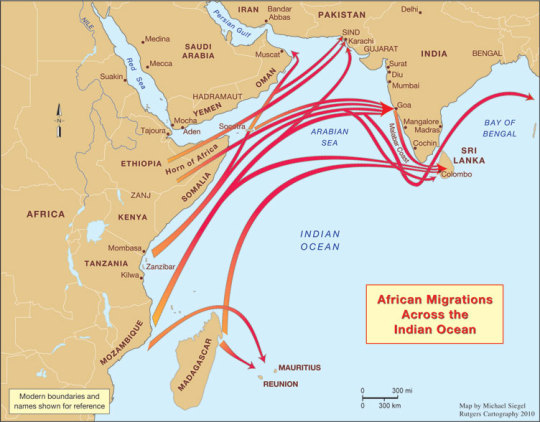
It should also be noted that the Cushitic people used numerous myths to justify their claim over the Bantu land. Before we look at the myths, it is essential to point out that the Cushites living with the Bantus in southern Somalia originated from northern Somalia and Ethiopia, the Ogaden region. Some of them had been exiled from Ethiopia for spreading violence in their localities. When the Bantus welcomed them, and the Cushitic people took many advantages and treated their kindness as a weakness. With this understanding of the Cushitic, we now look at the myths they perpetuate. First, the Cushitic people have written many books and articles posted on the internet. The books demean the Bantus and fail to explain that the Arabs and the Bantu used to trade together. Further, the writings are not categorical that the Arabs only used to steal the kids from both the Cushitic and Bantu groups and sell them to the Middle East and India. Neither do the writings state that the Arabs did not steal people from Tanzania or Mozambique and bring them to be slaved by the Cushitic people. The real question is, why would the Arabs, who were prosperous and civilized for many centuries, waste time to steal people for the inferior and uncivilized Cushitics when they could sell their slaves to rich people who were civilized? In the writings, the Cushitic people used perpetual deception to subjugate the truth.
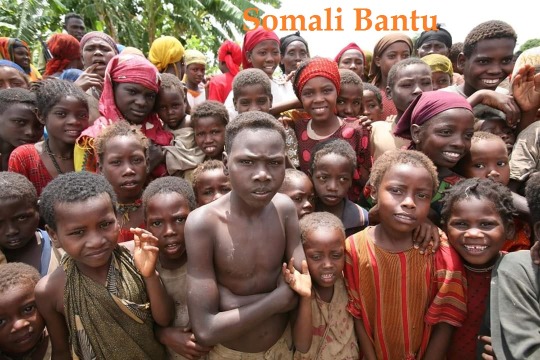
Other myths are the use of slavery to justify their unfair treatment of the Bantus and giving of wrong statistics; the Cushite was very unfair. Concerning the statistics, the Somali Cushite always gave the Bantus wrong statistics because they wanted to do away with them. Their statistics stated that the Bantus had approximately one percent population, while the Somali Bantus population was forty to fifty percent. This percentage was very wrong, and I wonder why the Cushite followed these tricks only to grab land and have power over the Somali Bantus. These myths were made to lie to the world and give the Somali Cushite a leeway to justify their claim over Somalia. This was a very negative way of doing things, and no one should emulate the Somali Cushite.
In conclusion, my opinion is that the Ogaden War was a big war, but there had to be a winner, just like any other war. In the Ogaden War, it is clear that the Ethiopians had it right and thus could gain the Ogaden region to their name. Moreover, the Ethiopians proved to be more prepared for this war than the Somalians. Lastly, another opinion is that this war brought the Cold War to Africa, which is true. This is because there was an intervention of supreme powers that tried to intimidate each other with their abilities. The Bantus proved to have a lot of influence in the Ethiopia–Somalia war, more so than the Somali Cushites. If anyone should have been greatly rewarded, it was the Somali Bantus. Unfortunately, Siad Barre was against them and thus used his authority to suppress them to the weakest point possible. This is an act that everybody in the world should condemn, and unity should be preached instead of disunity.
How the Civil War of Somalia in The 1990s Began
Somali has undergone various civil wars in its history. Most civil wars have political underpinnings, as politicians usually spread hatred and animosity among the citizens to the point that a simple issue could result in a big fight. A good example is the American Civil War of 1861–1865, which arose due to the difference in opinions regarding slavery. Another case was in Kenya (2007–2008) when the citizens differed on the outcome of the 2007 election. Somalia’s case was not any different; the war began as resistance against President Mohamed Siad Barre. With time, it grew more prominent and, thus, affected many people within the country. The war was supposed to be between two Cushitic sub-clans, Darod and Hawiye, but it ended up affecting the Bantus the most.
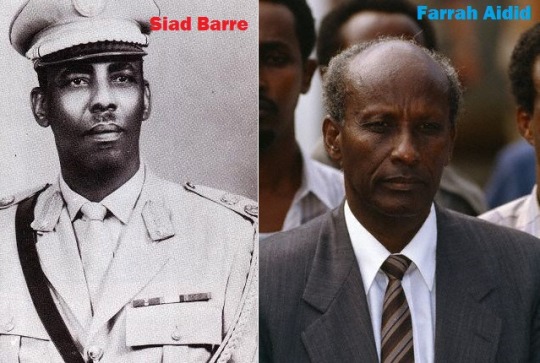
It is noteworthy that tribal underpinnings often influence African countries’ politics. For example, Mohamed Siad Barre, President of the Somali Democratic Republic between 1969 and 1991, fell into a similar trap. He was a member of the Cushitic group and belonged to the clan of Darod and Rer Dini. President Barre could be said to be among the worst dictators the world has seen. He massacred many people in the name of tribal affiliations. His general, Mohamed Farrah Hassan Aidid, was also a Cushite just like him, but from the clan of Hawiye and Habar Gidir. The Darod and Hawiye clans are the two main powerful sub-clans in Somalia. Thus, President Barre’s ascension to power was based on his tribal affiliation and not on his ability to lead the Somali people.
Most politicians cling to power even when people do not like them. For example, President Barre began to make plans to retain power while he was still the president. He intended to turn Somalia into a monarchy, where a member of his sub-clan could inherit power after his death. His general requested that he replace him, but President Barre refused. Instead, he embarked on resettling his people among the Somali Bantus as a strategy to secure the Bantus’ fertile land for them. Meanwhile, General Aidid secretly trained the military to fight against President Barre. The president got to know about the ongoing training when it was too late to counter it. Therefore, he fled the country, telling his people to prepare for a civil war. Barre attempted to cling to power, although he lacked the support and goodwill of the Somalis.
Initially, the war seemed to be between two clans. The president’s clan members fled from their homes and hid in the Bantus’ area because they were not prepared for war. The Hawiye clan was ready, and it started pursuing the Darod clan. Eventually, it discovered that the members of the Darod clan were hiding in the Bantus’ area. The Hawiye clan went to the southern region and massacred the members of the Darod clan. It also committed other atrocities. For instance, the Hawiye clan members repeatedly assaulted the Darod women in daylight in front of the Somali Bantus. The Darod clan members ran, but they had nowhere to hide from their rivals. The Somali Bantus did not engage in the war at the time, and the Darod clan collected all their guns. However, they forgot to retain some of the guns for their defense against attacks. Thus, it seemed like a war between the Darod and the Hawiye.
As the civil war between the Hawiye and the Darod clans escalated, the Bantus were accused by the Hawiye of being accomplices of the Darod. Thus, they mercilessly massacred them. They assaulted the Bantu women just as they had done with the Darod women. While the Hawiye Clan were busy with the Bantus, the Darod clan regrouped themselves and returned for their revenge. The Darod clan started attacking the Hawiye Clan until they ran back to Mogadishu. After the Hawiye retreated to the capital, the Darod clan members continued fighting the Bantus, who were defenseless at the time. They accused them of failing to assist in fighting against the Hawiye clan. As the war continued, many Somali Bantus lost their lives since they were on the receiving end in the long run.
Thus, the Somali Civil War was supposed to be a war between the Hawiye and the Darod clans. Still, the Somali Bantus ended up suffering the most compared to Somali Cushitic ethnic groups. The aftermath of the conflict was extremely brutal. Through the war, the Bantus underwent severe suffering, a violation and abuse of human rights at the hands of the Hawiye and Darod clans. The genesis of the war was the power struggle between President Mohamed Siad Barre and General Mohamed Farrah Hassan Aidid. The general wanted to dislodge the president from power, but the latter refused to leave the office. Therefore, their respective sub-clans turned against each other. Somali Bantus only got involved due to their perceived association with both clans, each accusing them of being an accomplice to the other.
How the Civil War Affected Somali Bantus’ Living State
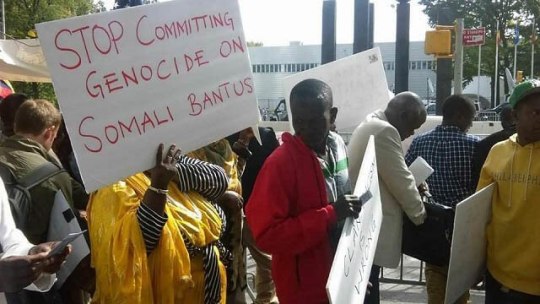
Somalia, a country in the African continent, has been consistently presented by the media as full of mysteries. Two such significant groups living there are the Somali Bantus and Somali Cushites. The Bantus are the ethnic group living in Somalia who have been deprived of their fundamental rights. The historical record shows that the Cushitic-led government had plans to wipe out the Somali Bantus from the land completely from the beginning. Although the plan failed, the Bantus went through some of the dehumanizing acts that fit the definition of genocide. The damages he caused the Somali Bantu people affected them mentally, and it also caused significant damages to their offspring’s future. The vast majority of Somali Bantus were being harassed and assaulted by the Cushitic people. Every family member of the Somali Bantus was affected by pain during wartime because each of them had one or more of their family members either killed, raped, or tortured. Their properties were also looted. Ultimately, although the Bantus suffered in the war, the impact would have been worse if Siad Barre were in power.
The Siad Barre government used a disguise to achieve its evil plan. First, the government called for peace, and the Bantus were commanded to surrender their weapons to the government. That was a plan to disarm the Bantus’ citizens while not doing the same to the Somali Cushites. At the time, the plans awaiting the Bantus’ people by their government were not within their knowledge. From the look of things, President Mohamed Siad Barre and General Farrah Aidid, the Somali warlord and militia leader, both disregarded the Somali Bantus. The Somali Bantus went through humiliation by both the government and rebel groups. While it is an obligation for heads of state to protect the lives of their citizens, in the case of the Civil War of Somalia, President Mohamed Siad Barre is believed to have engineered the war. At last, the plan failed after Siad Barre ran away from the country. Instead, his clan, the Darods who were at the center of the war, gave a lifeline to the Somali Bantus. However, the Bantus were honest about their actions, and they received their fair share from Allah, whereas the two thrives of Somalis received what they deserved. It was through Allah’s mercy that the government’s evil plan did not succeed. It establishes that deceivers will never achieve their plots, and they always end up as losers.
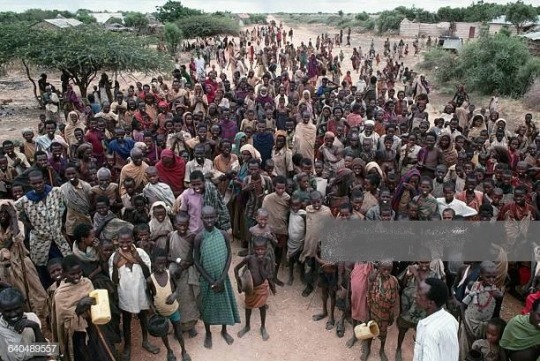
The Somali Bantus faced many physical attacks while in the country. They suffered racial discrimination since they were different in appearance to their Cushitic counterparts. They were harassed in various ways such as killings, sexual assaults (especially on women), and looting of their properties. As the situation worsened, the Somali Bantus were exposed to severe suffering. The only way out for them was to vacate their premises and look for other places to shelter their families. Thus, many Somali Bantus left their homes in Somalia and headed for the Kenyan border. The journey was long and took two to four weeks. Many of them died on the way due to hunger, and wild animals killed some. The only food available to them on the way was tree leaves. They relied on rain to provide water for cooking and drinking. However, the water they used was muddy and harbored diseases. They overcame numerous maladies, like malaria and others, which spread all over Somalia. There was a quota for Bantus in the Kenyan healing centers. Many Somali Bantus succeeded in reaching Kenya, but they faced many hardships during this journey.
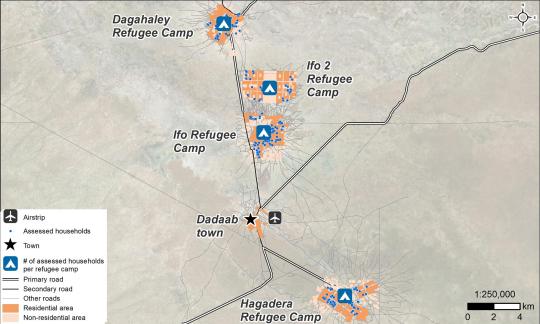
Even in the United Nations camps, the Somali Bantus were treated with disdain. In 1991, a significant portion of the Somali Bantus and other Somali Cushitic peoples gathered in the UNHCR refugee camps called Dadaab. The UN divided them into three distinct camps, known as Ifo, Dagahaley, and Hagadera. The reason was that they were too many to fit into one place. The Somali Bantus settled down and expected to find peace in the United Nations camps. However, after several years in the camps, similar issues to those they had faced in Somalia emerged. There were rampant cases of theft and sexual assault on women. These crimes usually happened at night and also when the Bantu women went into the woods to gather firewood. The Somali Cushitic clans perpetuated the animosities in the camp against the Somali Bantus. It reveals that the Cushitic people held a deep hatred for the Bantus to the extent that they continued attacking the latter in the camps. Thus, the Somali Bantus faced many security issues in the United Nations camps.
Indeed, the physical attacks on the Somali Bantus did not stop when they left Somalia. When the sexual assault and harassment kept on expanding in the refugee camps, the camps’ chieftains decided to solicit aid from the UNHCR. The leaders of the camps, who presented the Bantus’ grievances, wanted the Commission to provide them with security by relocating them to a safer place. The Commission’s authorities in the camps, to the surprise of the Bantus, dismissed their request for relocation. The dismissal of their petition prompted the leaders to go the extra mile and contact the Australian authorities through a memo, which failed. The Bantus then reached out to the US authorities. In 1998, the Bantus’ hopes were restored, and the US government addressed their grievances. The government reached an agreement, helping to resettle around 12,000 families of Somali Bantu refugees. The United States of America made history since it had never before resettled such a vast number of refugees from Africa. The US identified the Bantus in Somalia as a continually suffering community prone to physical abuse and racial discrimination.
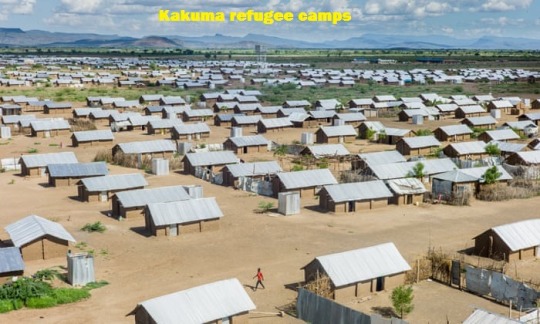
The US government agreed to give shelter to many Bantu, a move that was unexpected by the Cushitic Somali community. When the Cushitic people heard the news, they were shocked at first, and then they tried to convince the Bantu not to go to America. When the Bantu asked why, the Cushitic people’s reply was that it’s a Christian country, and it would lead their children away from the Islamic faith. The Bantu didn’t listen to them the second time because they didn’t want to end again in the same hole the Cushitic people trapped them before. When they saw the Bantu were eager to go to America, the Cushitic people started making a truce with the Bantu. They implored the Bantu to intermarry with them to have the opportunity to leave for the United States. However, the Bantu, who were determined to take advantage of the opportunity to get away from the Cushitic group and start a new life, rejected the offer. The rejection of the proposal prompted the Cushitic people to plant bombs in the streets, protesting the United States’ decision to allow the emigration of the Bantu. The International Organization for Immigration (IOM) had to step in to control the violence. That culminated in the settlement of the Somali Bantu into another Kenyan camp. In 2000, one major camp created for this relocation was called Kakuma. The Bantu were to stay in the camp for three years before their departure for the US. This move by the IOM was inconvenient for the Somali government because the government could not explain the departure of the Somali Bantu. In particular, the government of Somalia was locked out of the planned departure of the Somali Bantu to the US.
The civil war in Somalia in the 1990s played a significant role in shaping the lives of Somalia’s following generations; it affected the future population of the Somali Bantu people the most. The poor conditions the Somali Bantus faced after the war culminated in their quest for liberation. The Bantus were physically discriminated against due to their differences. Their appearance marked them as very different from their counterparts. Through their leaders, the Bantus sought help from various European authorities, to no avail. After contacting the US authorities, they finally got help. Though the aid came at a cost, the Bantus settled in Kenya at the Kakuma camp, where they waited for their departure to the United States. The hardship the Bantus faced gave them the strength to pursue their freedom.
Reflection on the Somali Bantu and Cushitic situation
The article I have presented highlights various situations of the Somali Bantu and Cushitic communities. Ideally, I have described an accurate and detailed exploration of why the Somali Bantu people remain a top secret of the Somali government. I have assessed the poor conditions of the Somali Bantu people after the civil war. Further, I have conducted an in-depth analysis of the efforts they made for their survival throughout the period. I intended to evaluate their strength; I admire their patience, tranquility, faith, resilience, and courage to face all their hardships. The story of the Somali Bantu informs us that difficulties in life can be overcome. Whenever we see people facing myriad challenges in their life, we should realize that God has the power to turn challenges into an opportunity. We should treat others with respect and dignity. We should not be part and parcel of corrupt dealings or participate in demeaning other human beings’ lives. Most importantly, we should pursue peace and not condone violence. We should emulate the United States government’s actions, which provided a safe and reliable place for the Bantus so that they could live a normal life like other people.
3 notes
·
View notes